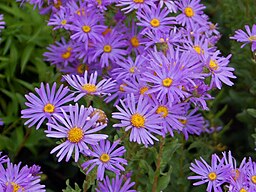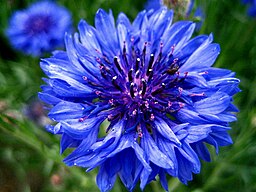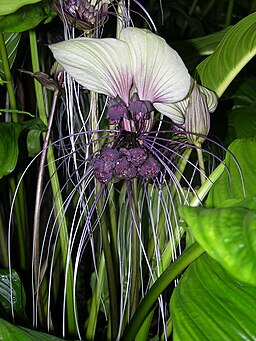We love flowers! In addition to being beautiful, they have great cultural and environmental significance. Here is a selection of our favorite flowers:
Also known as Windflowers, this genus can be found in shades of red, pink, white, purple, and yellow. In Greek mythology, it is believed that Anemones were created from the tears of Aphrodite as she mourned the death of Adonis. This has led to them being a symbol of forsaken love, good luck, and protection in western cultures. However, some eastern cultures instead see the flower as a symbol of illness.

A member of the Daisy family. This genus comes in shades of purple, red, pink, yellow, and white. Depending on the color, they can symbolize love or daintiness.

These tiny flowers in the genus Gypsophila are related to carnations and are commonly used in bouquets. They come in shades of white and pink and symbolize innocence.

The flower Centaurea Cyanus is known as the Bachelor's Button for its romantic folklore. Supposedly, if a bachelor in love wore the flower and it wilted overnight, it was a sign that the relationship would fail. This folklore has led to the flower becoming a symbol of celibacy. The plant is also commonly called a Cornflower due to once being common in cornfields. Cornflowers became a national flower of Germany after Queen Louise of Prussia escaped Napolian's army by hiding with her children in a field of Cornflowers. Although blue is the most prevalent color, it can also be found in pink, purple, white, and black. It is also completely edible and is used in teas, medicine, and food coloring.

The two most common varieties of Bat Flower are Tacca Chantrieri, the Black Bat Flower, and Tacca Integrifolia, the White Bat Flower. Both varieties are found in the tropics of Asia and are thought to attract evil spirits.


Begonias are the largest genus of flowers consisting of thousands of species ranging in colors of red, orange, yellow, pink, and white. It's a misconception that the flower represents caution due to the name translating to "beware." This translation was unintentional as the flower was actually named after the French governor Michel Bégon.

Calla Lily:
Carnation:
Casablanca Lily:
Chamomile:
Cosmos:
Chrysantemum:
Clover:
Crocus:
Daffodil:
Dahlia:
Dandelion:
Dianthus:
Dogbane:
Easter Lily:
Flame Lily:
Foxglove:
Fuchsia:
Gladiolus:
Heather:
Hellebore:
Hollyhock:
Hot Lips:
Hyacinth:
Hybiscus:
Hydrangea:
Indigo:
Iris:
Jade Vine:
Jasmine:
Laurel:
Lavender:
Lilac:
Lily of the Nile:
Lily of the Valley:
Lobster Claw:
Lotus:
Madonna Lily:
Magnolia:
Marigold:
Martagon Lily:
Moonflower:
Morninglory:
Moth Orchid:
Myrtle:
Nettle:
Nightshade:
Oleander:
Pansy:
Peace Lily:
Peony:
Petunia:
Plumeria:
Poinsettia:
Poppy:
Queen Anne's Lace:
Rafflesia:
Regal Lily:
Rose:
Rosemary:
Skeleton Flower:
Snapdragon:
Stargazer Lily:
Sunflower:
Sweetpea:
Thistle:
Tiger Lily:
Tulip:
Vanilla Orchid:
Violet:
White Egret Orchid:
Wisteria:
Wolvesbane: